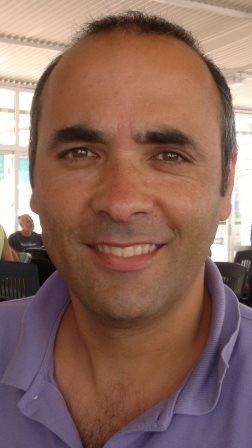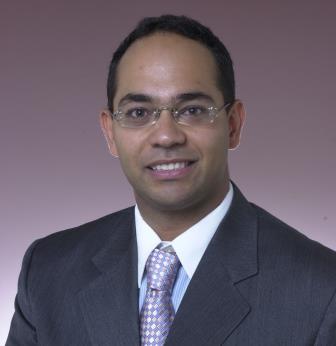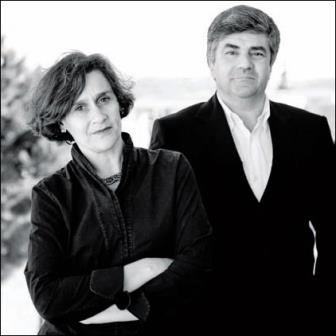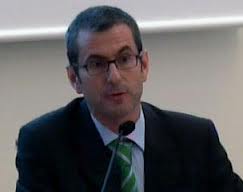The success of masonry structures in Brazil: Practice, research and challenges
Summary:
From the 1970’s to now Masonry Structures are a major case of success inBrazil. Currently, the local industry delivers more than 100 millions blocks per month. Hollow concrete and ceramic blocks up to 70 MPa are mostly available, with calcium-silicate, compressed earth blocks and others available at a smaller production scale. The lecture will show some of this experience: common practice of using masonry as structure of small totall buildings, and design details, including also partition walls in framed RC buildings. Recent research at universities and industries, and challenges to the future includes new performance requirements, thin polymeric mortar joints and sustainability issues.
Short CV:
Guilherme Parsekian has been working in the design and research of masonrystructures since 1994 and currently works as a professor at the Structures and Civil Construction Post-Graduation Program at the Federal University of SaoCarlos (UFSCar), where he got his Civil Engineering BSc in 1993. He has a MSc(distinction) in Structures and a PhD in Civil Construction from USP and worked as a Post-Doctorate Fellow at the University of Calgary. He is a member of several associations (including TMS since 2001) and of editorial/reviewer boards of journals and agencies. He served as secretary of masonry standard committees in Brazil. Co-author of three books in masonry including the Brazilian-Portuguese edition of the Masonry Structures Behavior and Design. His connection with the industry extends to Professional Engineering courses and consulting throughout the country, mainly in masonry.

Daniel Oliveira
Bond behaviour and durability of FRP composites applied externally to civil engineering structures
Summary:
The several advantages associated to the use of FRP composites in civil engineering structures (mainly reinforced concrete and masonry ones) has led to a considerable increment in use during the last years. However, the performance of these strengthening materials under harsh environmental conditions is still of great concern, which justifies the recent research efforts towards its durability characterization. This paper presents an overview of the most relevant findings regarding the durability of FRP composites related to civil engineering applications, with emphasis on the external strengthening technique. In addition, recent results obtained at UMinho on the bond behavior of FRP-strengthened masonry subjected to water immersion and hygrothermal exposures are presented and discussed in detail.
Short CV:
Daniel Oliveira is Associate Professor in the Department of Civil Engineering, University of Minho, Portugal. His main research interests are related to the rehabilitation of ancient masonry structures, earthquake engineering, use of composite materials and earthen constructions. Dr. Oliveira is secretary of the Rilem Technical Committee CSMComposites for Sustainable Strengthening of Masonry. He is or has been involved in 3 European and 14 national research projects in the field of masonry constructions. He is the supervisor of 12 PhD students (6 concluded)and 29 MSc students (25 concluded). He is author of more than 180 publications divided by books, chapter of books, journal and conference papers, and technical reports.

Wael El-Dakahkhni
Resilient Masonry Systems for the Next-generation of Seismic Codes
Summary:
With the increased cost of both structural and nonstructural components in modern construction worldwide, comes the demand for higher safety levels under natural disasters. This situation is occurring simultaneously at the time when many countries are adopting higher seismic hazard levels and insurers are enforcing more stringents creening requirements as stakeholders become more aware of risk levels associated with seismic events. The speaker will focuses on addressing key issues pertaining to our understanding of system-level seismic performance of masonry construction and the development of resilient masonry systems from the performance-based seismic design perspectives of the next-generation of seismic codes in North America.
Short CV:
Dr.El-Dakhakhni holds the Martini, Mascarin and George Chair in Masonry Design and is the Co-Director of the Center for Effective Design of Structures at the Department of Civil Engineering, McMaster University, Canada. He is the Chair of the seismic design subcommittee of the Canadian masonry design code and is a member of the Masonry Standards Joint Committee (MSJC) subcommittee on seismic design. He is also an Associate Editor of the ASCE journal of Structural Engineeringfor masonry and seismic effects. Dr. El-Dakhakhni’s research program is focused on quantifying the behavior of existing, and improving the response of new, masonry systems under seismic and blast loads.

Vitor Mestre e Sofia Aleixo
Mixed masonry inhistoric buildings: architecture and technology synthesis
Summary:
The conservation, restoration and rehabilitation of 19th C. and early 20th C. traditional buildings within a heritage framework, requires a special consideration of the cultural, material and technological elements. In buildings from this period architecture was under a process of industrialization, offering a place to rehearse the use of new techniques and new materials. In the resulting constructive systems it can be observed acertain hybridism. Therefore, as a special type, the preservation of mixed masonry buildings in a heritage framework should follow best practices in conservation and restore of such buildings structures. However, as a structural component of walls, this system have been one of the main problems to be overcome in conservation, sometimes even being used as the reason fortheir demolition.
Short CV:
Victor Mestre (1957, Lisbon). Diploma in Architecture by Superior School of Fine Arts of Lisbon (1981). Master in Restoration of Landscape and Architectural Heritage (Évora, 1988). Advanced Studies Diplomain Theory and Practiceof Urban and Architectonic Rehabilitation (Seville, 2005). Doctoral researcher in Vernacular Architecture with Portuguese influence in Goa, Damão and Díu (Índia)at Coimbra University (since 2012). Researcher in the Rehabilitation andRestoration of Architectural heritage and Vernacular Architecture field (since 1982). Director of the Safeguard and Revitalization Cabinet of Patrimony at the Directorate-General of National Monuments and Buildings (2000-2003). Integrated the team of the successful Candidacy of the Coimbra University to UNESCO World Heritage List (Coimbra, 2005|2009).
Sofia Aleixo (1967, Lisbon). Bachelor in Architecture by Architecture Faculty of Technical University of Lisbon (1991). Pedagogical and Scientific Exams (MA) in Architectural Conservation Methodologies (Évora, 2007). Doctoral researcher in Conservation of Cultural Heritage at Oxford Brookes University, United Kingdom (since 2009). Teaches in HE since1996, and is a member of the Architecture Department of Évora University (since2002). In 2012 she teached Architectural Conservation and Regeneration, in Oxford, UK. Researcher in the Rehabilitation and Restoration of Architectural heritage and historic School buildings (since 2007). Director of the Technical Local Cabinet in Belver, Gavião, Portugal (1999-2001) for which the Historic Village Master plan was designed.
The office the VMSA architects (1997), started with Victor Mestre own practice in Lisbon (1981) later joined by Sofia Aleixo (1991). Both authors have projects and works published in several publications, national and international, and have received several architectural awards,such as the recent Europa Nostra Conservation Award, 2013. Have also participated incollective and individual exhibitions, as well as in seminars about Architecture and Heritage in many countries.

Pedro Arias-Sánchez
Geomatic technology applied in the masonry structures: Areview
Summary:
Geomatics is a relatively new scientific term. It includes the tools and techniques used in Land Surveying, Remote Sensing, GIS, GNSS, Photogrammetry, GPR, and related forms of earth mapping combining the seterms with geoinformatics. The Masonry concept is related to the building of structures from individual units laid in and bound together by mortar. In the case of structural applications, these techniques have been applied to 3D modelling and sometimes monitoring. The accurate geometric information provided by Geomatic techniques motivates the implementation of such results in the complex, and sometimes slightly approximated, geometric scene that is frequently used in structural analysis (FEM techniques, theory of Limit Analysis). These experiences are especially interesting focused on historical masonry structures, where it is possible to improve the integral 3Dmodels composed by external and inner geometry from Geomatic techniques.
Short CV:
Pedro Arias-Sánchez is full time lecturer of Geomatic Techniques at Vigo University´s (Spain), Mining School Engineering. He reaches the Professor level on 2013. He has been educated as Engineer at the University of Sevilla and University of Santiago de Compostela, and PhD at University of Vigo. He has served as full time lecturer of Geomatic Techniques at the University of León. Dean of the Mining School, University ofVigo (2007-2013). Secretary WG V/3, Commission V Close-Range Sensing: analysis and applications, ISPRS (2008-2012). ICWG I/Va, Mobile Scanning and Imaging Systems for 3D Surveying and Mapping, ISPRS. He has guided more than 100 research projects and 7 patents registered. He was promoter of a University Spin-off on 2008. He was supervisor of 9 PhD Theses (3 European Doctorate). He has more than 635 citations and 15 H index, and scientific Committee of 12 International symposiums.